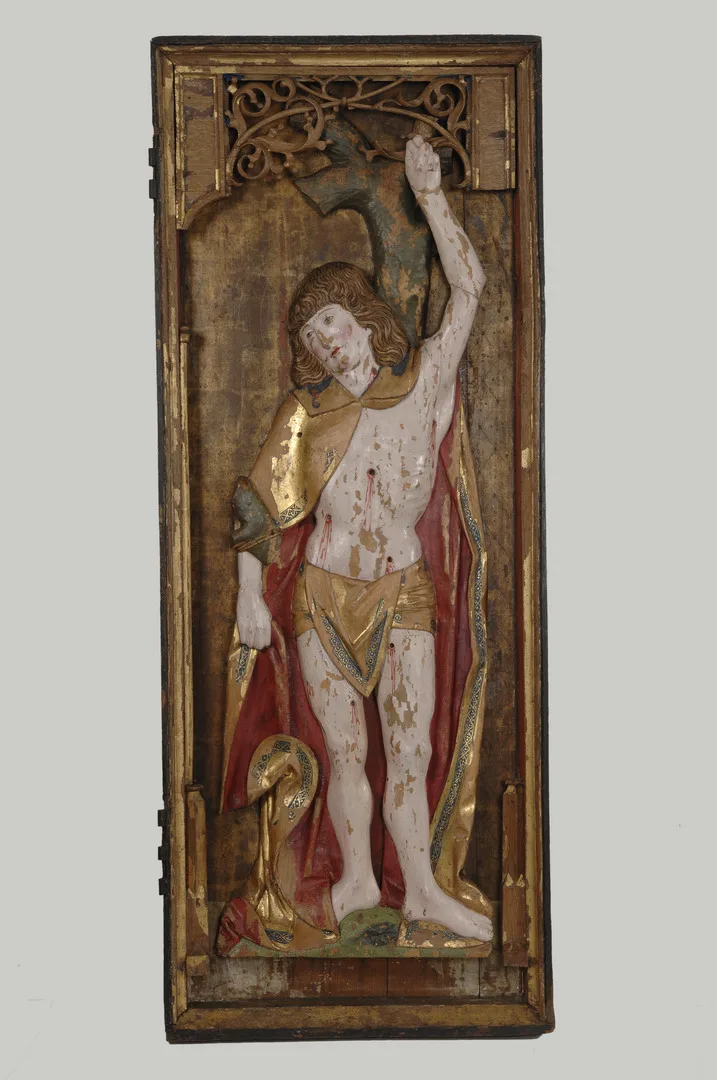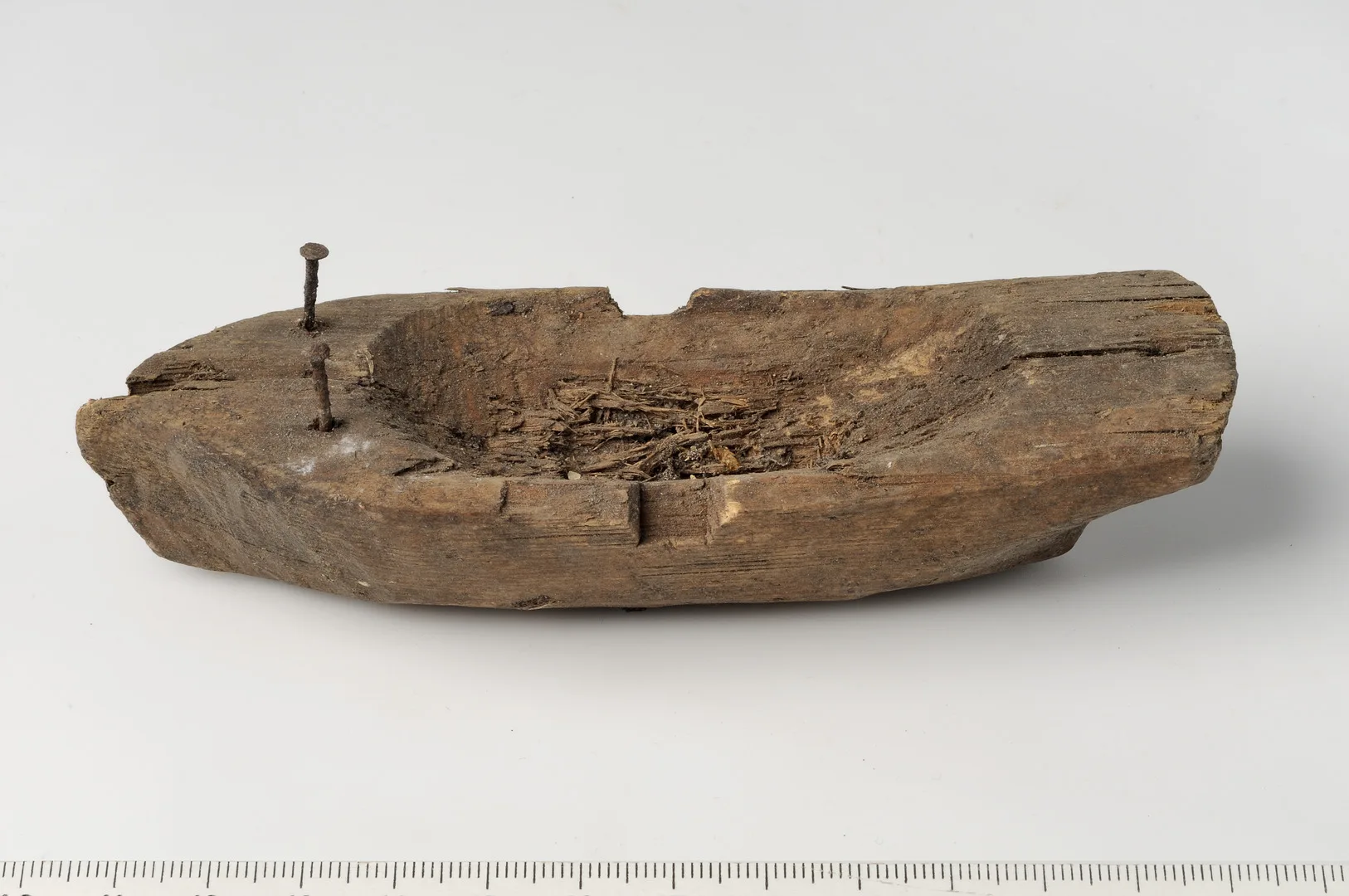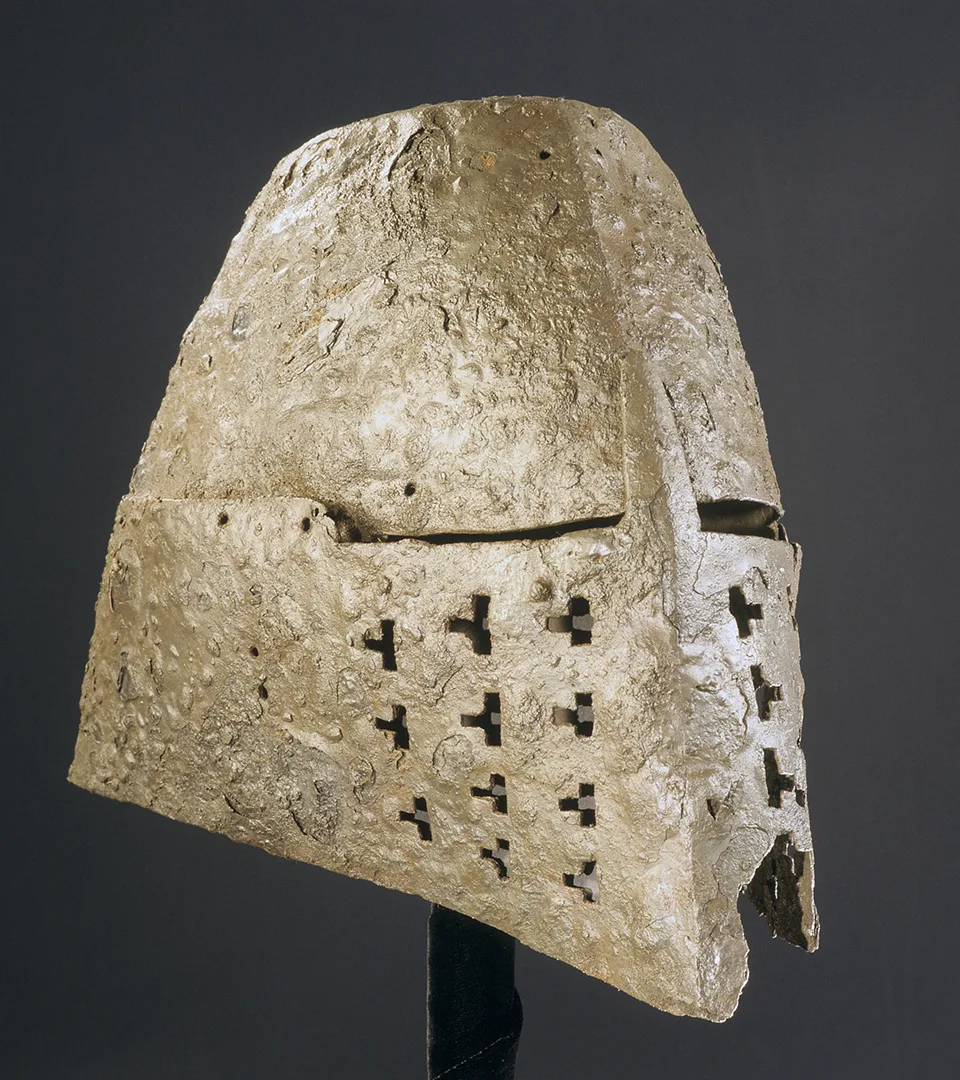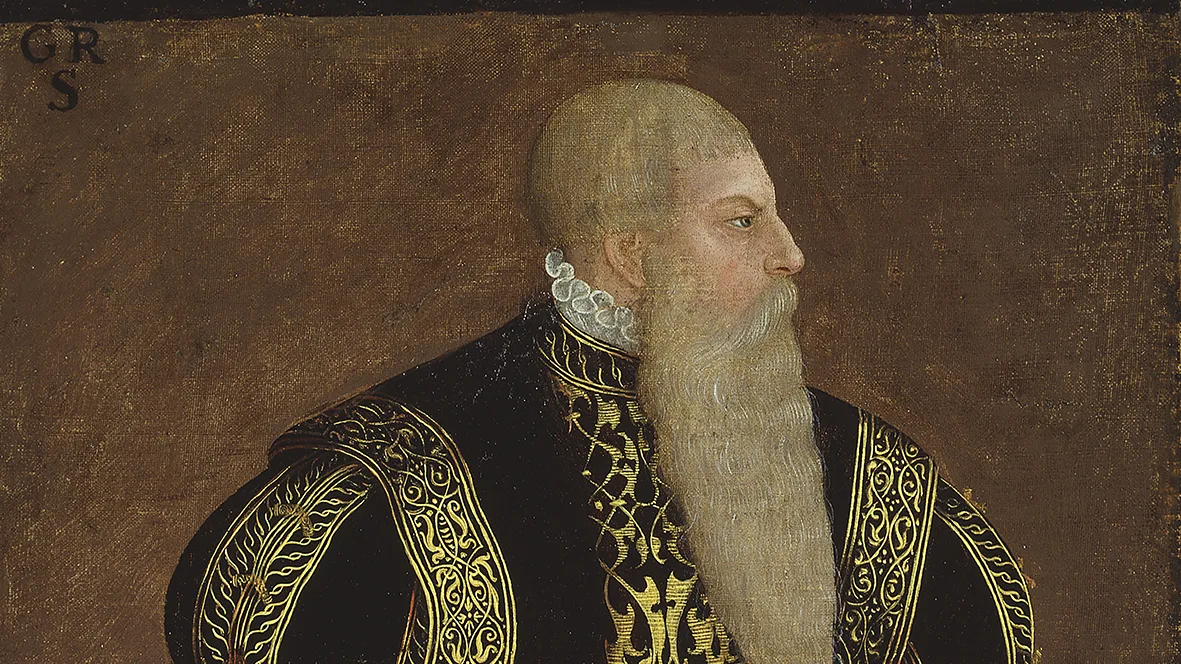Medieval saint: Sebastian
Viking Age
AD 800 – AD 1100
Middle Ages
AD 1050 – AD 1520
Modern Age
AD 1520 – AD 2025
Sebastian is said to have been born around 260 AD, but the stories about his life were written down later, so it is uncertain whether he actually existed. According to legend, Sebastian was a soldier in the Roman army.At that time, Christianity was a new and growing religion, even though it was forbidden. Christians met in secret, and Sebastian joined one such group. He believed he could help the sick recover, and soon many people in the city knew of him.
He rose to the rank of officer in the imperial guard of Emperor Diocletian (who ruled until 305), known for his severe persecution of Christians. Sebastian was accused of being a Christian. When he refused to renounce his faith, Diocletian ordered that he be executed by arrows.
Sebastian’s body was left at the execution site, and he was believed to be dead. But he revived and was cared for by the widow of a martyr.

Altar sculpture
Depicting Saint Sebastian
How did Sebastian become a saint?
After recovering, Sebastian confronted the emperor about his persecution of Christians. He was then beaten to death with clubs. His body was thrown into the Cloaca Maxima, an underground vaulted drainage channel in Rome. A Christian woman retrieved his body and buried it in an underground cemetery.
Just a hundred years after Sebastian’s death, Christianity was legalized in the Roman Empire. A church was built at his burial site. He became known as San Sebastian, the patron saint of soldiers and of Rome. When the plague spread, people began praying to him for protection from illness. During the Black Death, he became one of the most important saints, alongside Jesus and Mary.
How is Sebastian depicted?
Saint Sebastian has been a frequent subject in art history. The oldest known image dates from the 6th century, but the motif became common from the 14th century onward.
Sebastian is often shown standing, bound, and pierced with arrows. This motif was especially popular after the Middle Ages. In the collections of the Swedish History Museum, there is an altarpiece with a relief sculpture of Sebastian on one of its wings. It was created in the early 1500s and comes from Vada Church in Uppland.

Altar door
On view at Historiska museet in the exhibition Medeltida liv
In the 18th and 19th centuries, Sebastian became an important symbol for homosexual men. He has also been a patron saint of archers and athletes. In the late 20th century, he became a patron saint for people living with HIV and AIDS.
Sebastian’s feast day is January 20.







